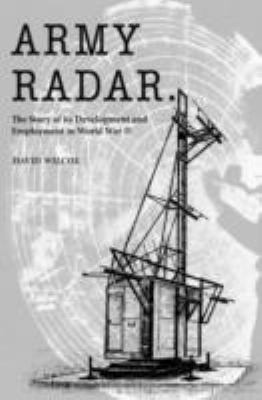
Book
|
Army radar : the story of its development and employment in World War II
-- Army radar.
Copies
1 Total copies, 1 Copies are in,
0 Copies are out.
Title
Army radar : the story of its development and employment in World War II -- Army radar.
Call No
D810.R33
Authors
Subjects
Language
English
Published
[Great Britain] : Menin House, 2014.
Publication Desc
242 pages : illustrations ;
ISBN
1908336846 (paperback)
Dimensions
23 cm








